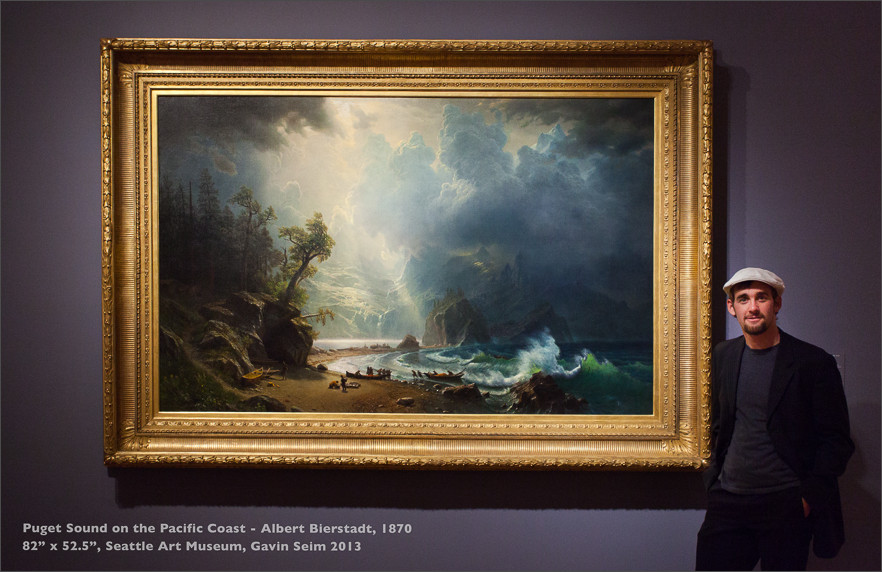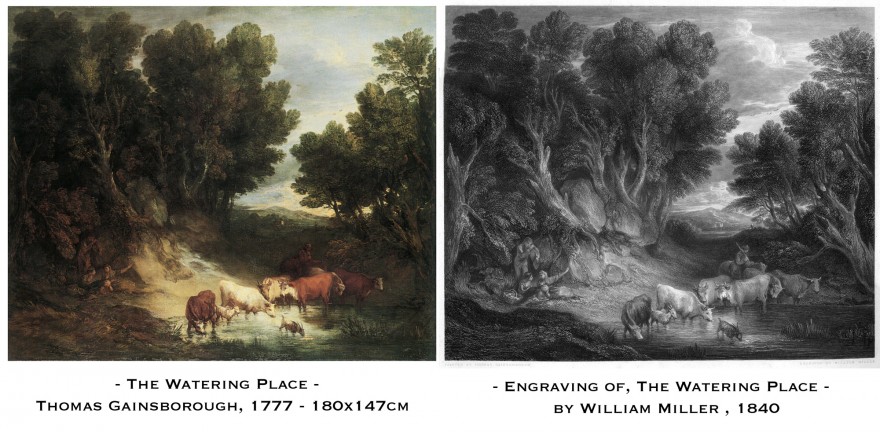
Does this art make me look small? I hope so.
Last week the family and I made the final day of the European Masters exhibit at Seattle Art Museum. It was a collection from the Kenwood House and many of these originals had never left England. Most were paintings that exemplified both human subjects and landscapes. Works such as Miss Murray by Sir Thomas Lawrence – Anne, Countess of Albemarle and Son, by George Romney – Self-Portrait with Two Circles by Rembrant – The Cherry Gatherers, by Francois Boucher – Greyhounds coursing a Fox, by Gainsborough and many more. Most of these originals were larger than I was and I must warn you that seeing them in person is the only way to get the true impact and inspiration they offer.
Sadly the European Exhibit itself was closed to photography being on on loan. I believe this is a poor choice part of the Kenwood House who owns it. These images are long out of copyright and as pieces of history, they should be spread far and wide and allowing photos of them will only raise awareness to their beauty. But I won’t rant. This image here was in the SAM permanent collection which does allow photography. It’s a real beauty and showcases the type of beautiful work were seeing. It’s also a work from the Hudson River School era, which is a favorite of mine for landscape inspiration. It was indeed something to see originals and much as 400 years old. There’s much to be learned from history and it’s something we’re covering in more detail in my new film, PHOTOGRAPHICS.
I’m a photographer who tries not to emphasize photography itself – Meaning that while I enjoy and teach the science, history and craft of photography, it’s not what my work is about. The medium doesn’t matter nearly so much as the result. When I make an image I’m seeking the grandness that the master painters produced. When I get my mind away from the gadgets and focus on my visualization it gets easier. We must understand the craft and science of our medium so we can work unobstructed by it, but I make furniture for walls. That’s my work. That’s what I need to focus on. Not hundreds of “good” images or how many I can post onto my website.
Photographers tend to think of themselves as lesser artists. The idea of the Wall furnishing is something we seem to struggle with – It’s a topic I recently talked about in this video and that I looked at in this article. Most of the few photographers I know who truly relate to me on this are fellow alumnus of Wall Portrait Conference. I have a hard time getting people to truly accept the idea. I don’t think people believe that their work is heirloom quality. Maybe it’s not. But it can be. Photographers are so set in the idea of snaps, 8×10’s and pics, that even when printed large they still think of them and produce themas such. More posters than heirlooms. It’s not only about the size – When you don’t truly value your work, it reflects in your finished product. When you don’t plan to make an heirloom, you usually don’t. Something to consider.
Once we realize that the medium is incidental to the finished and focus on making that result as spectacular as it can be, everything changes. One reason you see me post fewer new images than in the past is that my standards have increased. If I just make a nice photo it might make it to my Facebook page or a travel journal, but I don’t focus too much on it. I move quickly forward, pausing only when I get an image that I feel truly excels. Something like Sunset at the Celestial City that I can get serious about putting on a wall.
I’ve learned all these ideas from modern masters like Ken Whitmire and Michal Fatali and by studying the master painters spanning hundreds of years.
My concept is this – The most relevant and profitable painters and photographers are making furniture for walls. It’s not about paper or gear, except where those effect the quality of the work – The finished image on the wall is what counts. The bottom line is that studying where we came from and how painters did what they did will make us better photographers – If we can look at their work and learn how to use those ideas to make and sell our own, things take on a grand new light. It’s not easy, but we can Raise The Bar.
Some think I take this too far. That these are small things. It’s true that everyone is different and there are many types of work to be done in our industry. Not everyone must agree with me, but just take time to look at the painters and think about who is still getting noticed hundreds of years later.
There is an endless procession of good work today – But simply having work does very little to make you stand out. Raise The Bar.
Gavin Seim

